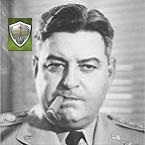ColinWright
Posts: 2604
Joined: 10/13/2005
Status: offline

|
quote:
ORIGINAL: Curtis Lemay
quote:
ORIGINAL: ColinWright
I think this fails on three scores.
First of all, it doesn't fail on any score. The scenario works, period.
If by this you mean that in hot-seat matches with yourself, the forces wind up about where they did historically, that's not good enough.
The same can be said for the 'Barbarossa' segment of SPI's 'War In the East.' However, that is almost transparently not a simulation of anything.quote:
quote:
First, it's undemonstrated that the Germans would have 'unrealistic' counterattack abilities. Faced with a German counterattack, would an Anglo-American infantry brigade of mid-1944 really have started hoicking the cooks up to the firing line? Wouldn't they just have yelled for help and fallen back? Cooks, etc were sent up to the front in the Battle of the Bulge -- at least so legend says -- but the very fact that this was seen as remarkable points to how rare the practice was. Moreover, in that situation there was no help to hand. It wasn't like Normandy, with units jammed in cheek to jowl.
I'm talking about how the scenario would work under TOAW. And if German units are designed to one standard, with lots of rear-area elements included, and Allied units are designed to another, with none - the Germans will be unrealistically strong.
quote:
Second, even if it can be demonstrated that rear-area elements need to be represented for both sides, this ignores the question about whether the gains in fidelity offset the loss in fidelity due to the skewing of density factors.
Again, by designing to the same standard for both sides, the relative densities are correct. And, at least in Normandy, the absolute density is effectively adjusted by the adjustment to the Attrition Divider.
No...not really. If we assume Norm's density factors are correct, then where he (and probably the historical combatants) could jam in four regiments, if you try it, the density light will go off and you'll pay dearly for it. What one will get is a system where the historical density of troops simply cannot be put on the line -- assuming one doesn't want to get creamed, that is.quote:
quote:
Third, when rear-area elements are put in, they don't just fight in the 0-30% or whatever of engagements they did fight in -- they fight in all of them.
I think the rationales that I've listed for the way I did it are more important.
quote:
You have two sides. On one side, rear area elements virtually never fought. On the other, they fought some unknowable percentage of the time. Let's be generous and say 60%.
The Germans sent about 500,000 men to Normandy. About 60,000 got out. The rest became casualties of one sort or other. Everybody fought.
Should we apply the same logic to the French campaign of 1940? By the end of the campaign, over two million Frenchmen were casualties 'of one sort or other.' Ergo, everybody fought. Fact of the matter is, rear echelon elements can surrender. They can even fight ineffectually. They'll become casualties of 'one sort or another.' It doesn't follow that they were fighting usefully in the majority of engagements their parent formations were engaged in.quote:
quote:
So for both forces in combination, the percentage of the times rear area elements fought comes to around 30% -- and I wouldn't be surprised if the number could be shown to be a third of that.
15th Army didn't fight too much in this campaign, either. By this line of reasoning, I should have omitted them. The rear-area elements were on the field of battle and eventually fought. They need to be included.
No...it would be nice if you could selectively include them. However, you can't. Therefore, you don't 'need to include them.' You need to decide which leads to a better simulation -- including them and having them fight in all battles (and drive up the density past what Norm intended), or not including them and have them not fight ever.
I also note that you didn't address my query about why it is appropriate to include Allied rear-echelon elements when it is quite improbable that they would have fought under any circumstances likely to arise in your scenario.
You asserted a while back that this had to be done because German rear-echelon elements were always fighting -- but this seems to be going at it the wrong way. Having included rear-echelon elements from one side because they sometimes fought, you find yourself including them from the other side even though they never fought.
It seems fairly obvious that simulation would be better served if the rear-echelon elements from neither side were included. Perhaps up the German rifle squad replacement rates.
_____________________________
I am not Charlie Hebdo
|
 Printable Version
Printable Version










 New Messages
New Messages No New Messages
No New Messages Hot Topic w/ New Messages
Hot Topic w/ New Messages Hot Topic w/o New Messages
Hot Topic w/o New Messages Locked w/ New Messages
Locked w/ New Messages Locked w/o New Messages
Locked w/o New Messages Post New Thread
Post New Thread